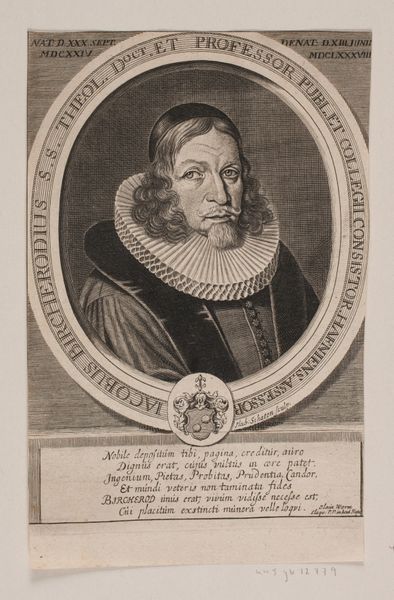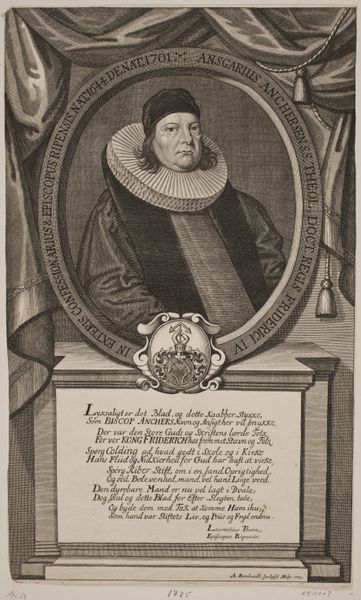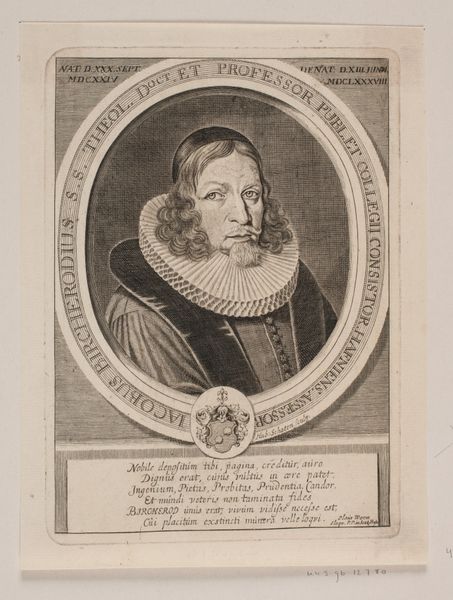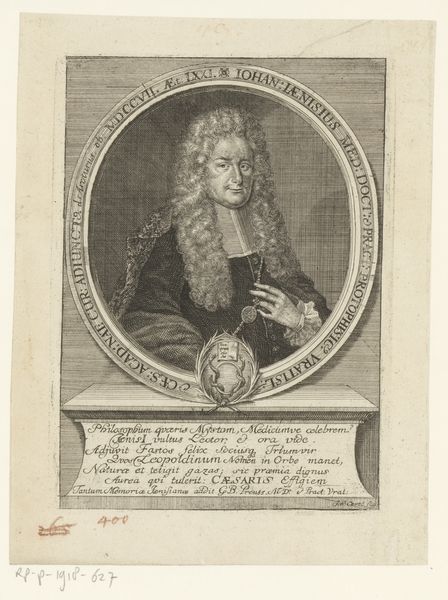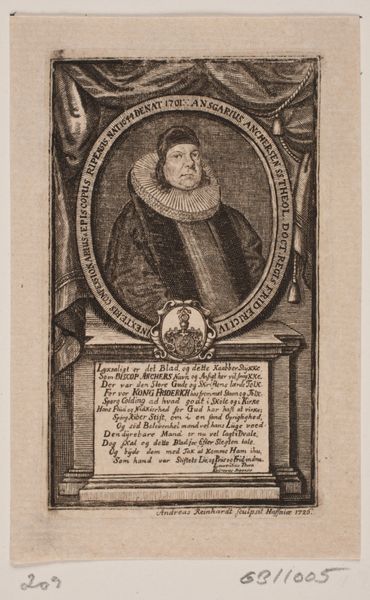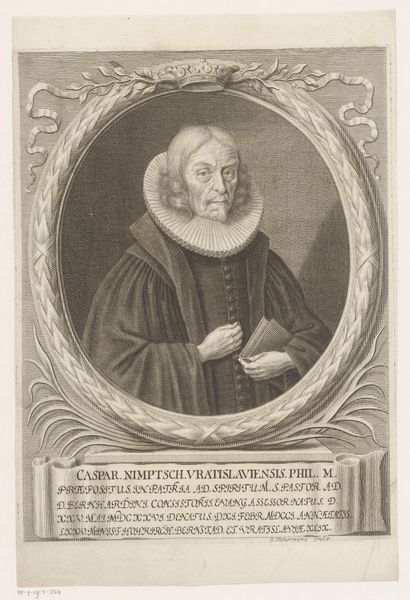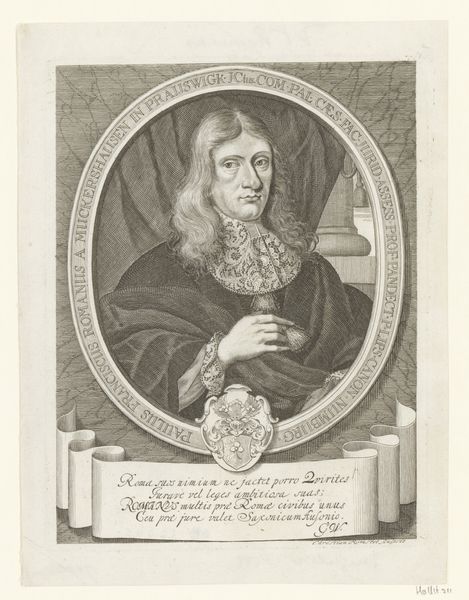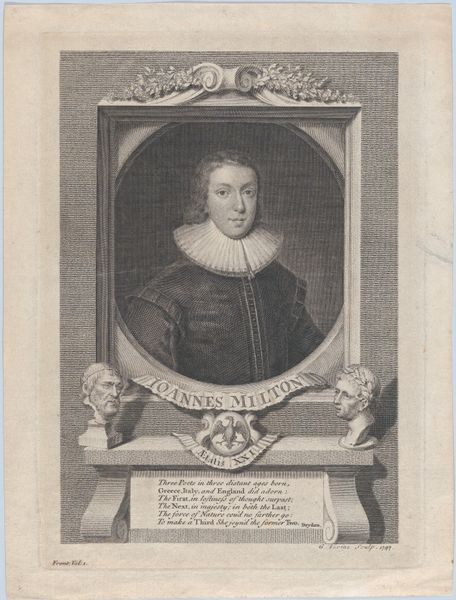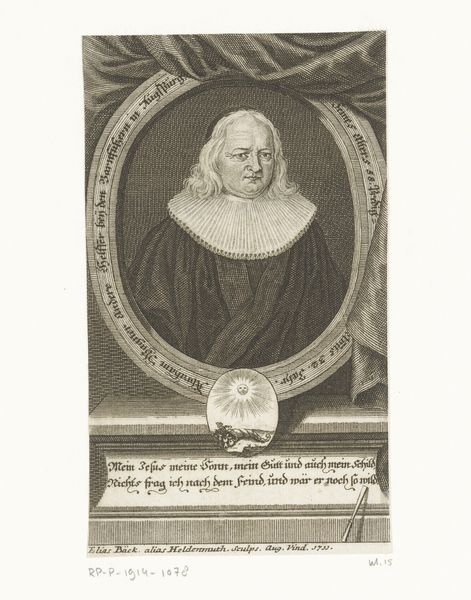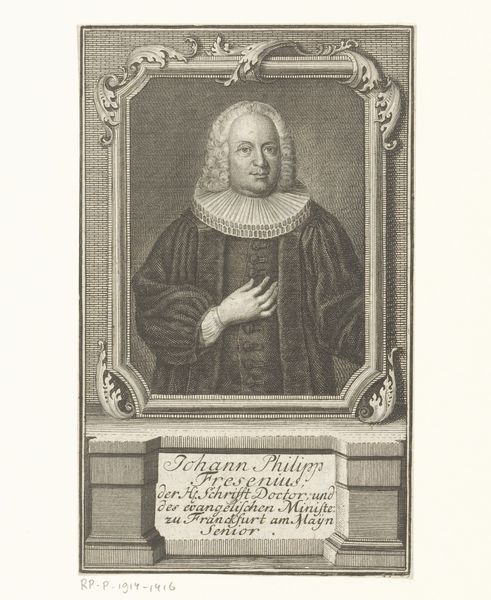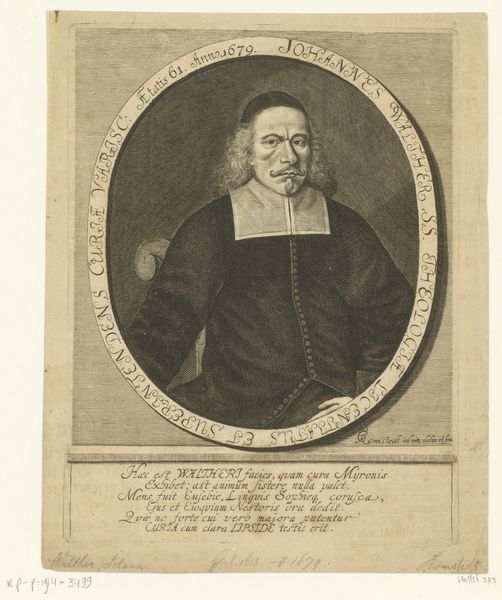
print, engraving
#
portrait
#
baroque
# print
#
history-painting
#
engraving
Dimensions: 313 mm (height) x 203 mm (width) (plademaal)
Curator: This engraving, "Biskop Christen Lodberg," by Hubert Schaten, likely created between 1693 and 1696, presents Lodberg within a finely etched oval frame. The frame itself is rich with text, surrounding his portrait like a halo of information. What strikes you initially about this piece? Editor: The sheer formality of it. It's very… stiff. Lodberg's gaze is intense, but almost devoid of warmth, despite the elaborate ruff around his neck. And the lettering around the portrait feels incredibly authoritative. It definitely projects a sense of established power. Curator: The formality you sense is quite deliberate, typical of Baroque portraiture, emphasizing status and intellect. The text is important. The inscription circling Lodberg notes his titles – theologian, doctor, and superintendent – underscoring his prominent role in the Church. Below his image you see a crest, and some verses. How do you interpret their combined effect? Editor: Well, the crest visually reinforces his lineage and authority. The verse adds a layer of eulogy – suggesting perhaps this was created posthumously, as a commemoration of his life and works, particularly within the Diocese of Ribe? The overall design does project an enduring legacy. Do we know about Schaten's role, or the specific cultural circumstances of the portrait? Curator: It appears Schaten often worked on commissions depicting prominent figures of the time. This engraving was likely intended for a wide audience, thanks to the nature of printmaking. Engravings like this one had a public function: not just to record the bishop's likeness, but also to solidify his image within the religious and political landscape. Its role as a historical document is very important here. Editor: Absolutely, seeing the portrait displayed at Statens Museum for Kunst definitely enhances the impact on the community now, adding another layer to the visual symbolism of power, and the dialogue between artwork, artist, and society. How perceptions shift with time is very important to note. Curator: I concur. The careful rendering and details not only show his specific features, but are also cultural markers: they speak to ideas about piety, power, and memory in 17th-century Denmark. It provides insight into the cultural continuity maintained by portraits, and the role symbols play in preserving collective memory. Editor: And through that memory, we gain insight not only into Lodberg himself, but into the systems of power that shaped his world, and that continue to resonate, however distantly, even today.
Comments
No comments
Be the first to comment and join the conversation on the ultimate creative platform.
